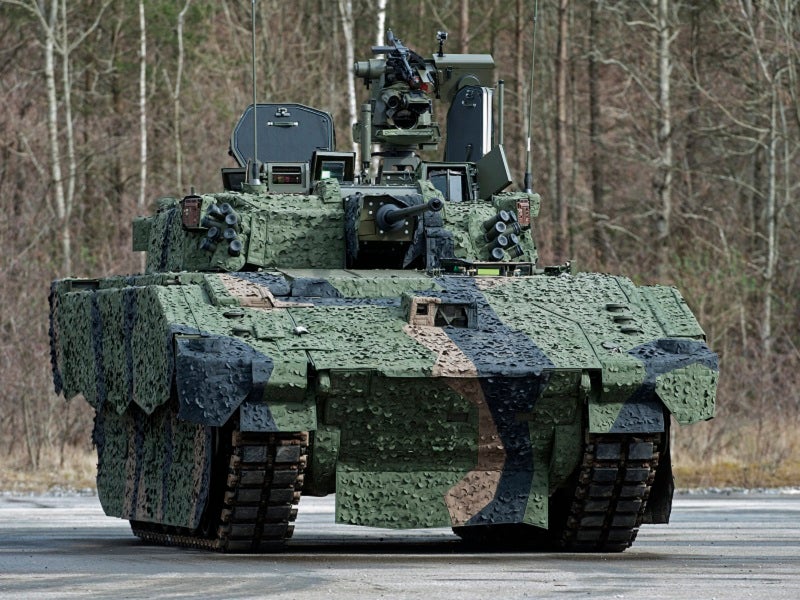
The UK Ministry of Defence (MoD) says it is still unknown when the troubled Ajax programme, planned to deliver hundreds of armoured vehicles to the British Army, will be able to introduce the platform into operational service.
Developed by US-based General Dynamics, the Ajax family of armoured vehicles is intended to replace a range of ageing platforms currently in service with the UK military. Initiated in 2010 in a fixed-price £5.5bn ($6.3bn) deal with the UK MoD, General Dynamics Land Systems UK would perform design, manufacture, and initial in-service support of the intended 589 vehicles across the programme’s six variants.
According to a UK House of Commons Committee report into the Ajax programme in June this year, by December 2021, the MoD had paid General Dynamics £3.2bn, with the vehicle having been designed, 324 hulls built, and the assembly and testing of 143 vehicles underway. The MoD had, at that time, received 26 Ajax vehicles.
However, the slow gestation of the programme has seen a catalogue of delays. In 2014, the MoD extended the expected in-service date by three years from 2017 to July 2020, subsequently missing a revised target date of June 2021. The same year, the MoD publicly acknowledged concerns about excessive levels of noise and vibration experienced by crews operating the platforms, which resulted in medical injuries.
Since this time, despite efforts to rectify the problems with the vehicle, they remain unresolved, with the committee report stating earlier this year that the MoD did not know when Ajax would be able to enter service. The full operating capability target for the Ajax family of Q2 2025, fifteen years after the programme’s contract award, is unlikely to be achieved.
An absence of understanding
This absence of any kind of certainty persists, with Alec Shelbrooke, Minister of State within the MoD, stating in a written parliamentary response on 14 September that there was no “realistic timescale” for the introduction of Ajax into the British Army.
“The Ministry of Defence continues to work with General Dynamics to resolve the noise and vibration problems on Ajax while protecting the taxpayers’ interests. As acknowledged by the Infrastructure Projects Authority the project remains within its approved budget and General Dynamics are required to deliver to the terms of the £5.5bn firm-priced contract,” Shelbrooke stated.
“We will not accept a vehicle until it can be used safely for its intended purposes and until long-term solutions to the noise and vibration problems have been found, we cannot determine a realistic timescale for the introduction of Ajax into operational service.”
Although derived from the ASCOD platform in service with the Austrian and Spanish militaries, more than 1,000 alterations had been requested by the MoD in creating the Ajax, adding several layers of additional complexity.
What about Warrior?
Another UK armoured effort, that of the Warrior Capability Sustainment Programme, was intended to upgrade the 1980s era Warrior infantry fighting vehicle (IFV), including the design and addition of a new turret with a stabilised 40mm main gun.
Despite some progress in the development and testing of the new turret on the legacy platform, the upgrade to the Warrior fleet was cancelled in 2021 after more than ten years of work at a cost of over £400m.
Despite the cancellation of the upgrade, the Warrior continues to serve in the British Army, with the platform being replaced by the wheeled (and turretless) Boxer vehicle. Should Ajax suffer the same fate as the WCSP, the MoD could find itself in the position of having invested more than £3.5bn to not introduce or upgrade two armoured vehicles, effectively returning the British Army back to square one.







